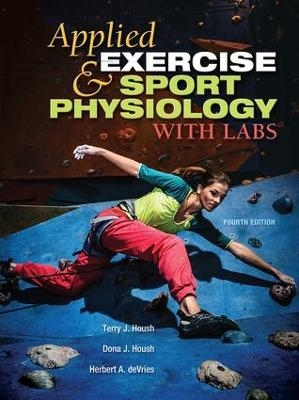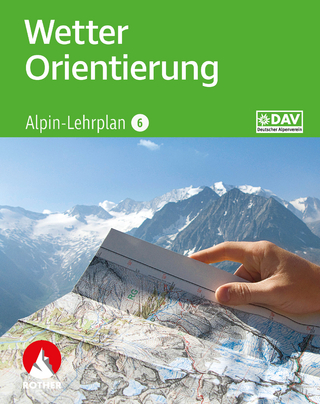
Applied Exercise and Sport Physiology, With Labs
Holcomb Hathaway, Incorporated (Verlag)
978-1-62159-049-1 (ISBN)
Applied Exercise & Sport Physiology, Fourth Edition, presents theory and application in an appealing, balanced, and manageable format. By providing an essential introduction to the systems of the human body and covering important aspects of exercise and sport physiology, it will be a useful resource for students as they learn to become exercise science professionals, physician's assistants, physical therapists, physical educators, or coaches. It provides the right amount of practical information they will need to apply in hospitals, clinics, schools, and settings such as health clubs, youth sport leagues, and similar environments.
The authors have carefully designed the material to be covered easily in one semester, in an introductory course, but the book can also serve as a foundation for advanced courses. Its 18 lab experiences are matched to relevant chapters and complement the topics covered; they allow readers to apply physiological principles to exercise and sport, provide opportunities for hands-on learning and application of the scientific principles, and often don't require complex equipment.
Terry J. Housh is a professor in the Department of Nutrition and Health Sciences, Director of the Exercise Physiology Laboratory, and Co-director of the Center for Youth Fitness and Sports Research at the University of Nebraska-Lincoln (UNL). He has co-authored more than 250 peer-reviewed research articles and eight college textbooks, and he has given more than 250 presentations at annual meetings of professional organizations including The American College of Sports Medicine (ACSM), the Society of Health and Physical Educators (SHAPE America), National Strength and Conditioning Association (NSCA), and National Athletic Trainers Association (NATA). He was the 1998 recipient of The Outstanding Sport Scientist Award from the National Strength and Conditioning Association Dona J. Housh is a professor in The Oral Biology Department, College of Dentistry, at the University of Nebraska Medical Center, where she teaches Human Physiology to first year dental students as well as post-doctoral graduate students in various dental specialties. Housh's research interests include muscle function, neuromuscular fatigue, and the hypertrophic responses to resistance training. She has authored numerous peer-reviewed articles in prestigious scholarly journals and has presented research findings at annual meetings of The American College of Sports Medicine and The National Strength and Conditioning Association Herbert A. deVries (1918-2009) was Professor Emeritus of the Department of Physical Education at The University of Southern California. He was world renowned for his research on the physiological adaptations to exercise training in the elderly and for research involving the application of electromyography to various aspects of neuromuscular fatigue. He published extensively in prestigious peer-reviewed journals and was the author of eleven books, including five editions of his classic text Physiology of Exercise for Physical Education, Athletics, and Exercise Science. For his lifetime of scholarly work, Dr. deVries was honored with the Alumni Honor Award from East Stroudsburg University, the Silver Anniversary Award from the President's Council on Physical Fitness and Sports, and the Citation Award from The American College of Sports Medicine. In addition, the Council on Aging and Adult Development of AAHPERD (now SHAPE America) named the CAAD Research Award the Herbert A. deVries Research Award
1. Why Study Exercise Physiology?
2. Structure of Muscle Tissue and Muscle Contraction
3. Energy Metabolism and Metabolic Adaptations to Training
4. The Nervous System
5. The Cardiovascular System
6. Respiration
7. The Endocrine System
8. The Immune System
9. Health Benefits of Physical Activity
10. Aerobic Exercise Prescriptions for Public Health, Cardiorespiratory Fitness, and Athletics
11. Muscle Strength and Resistance Training for Health and Athletics
12. Flexibility
13. Sprinting and Speed Training
14. Neuromuscular Fatigue
15. Nutrition for Fitness and Athletics
16. Ergogenic Aids for Fitness and Athletics
17. Environment and Exercise
18. Growth, Development, and Exercise in Children and Adolescents
19. Aging and Exercise
| Erscheinungsdatum | 12.07.2017 |
|---|---|
| Verlagsort | Scottsdale |
| Sprache | englisch |
| Maße | 206 x 274 mm |
| Gewicht | 1338 g |
| Themenwelt | Sachbuch/Ratgeber ► Sport |
| Schulbuch / Wörterbuch | |
| Weitere Fachgebiete ► Sportwissenschaft | |
| ISBN-10 | 1-62159-049-6 / 1621590496 |
| ISBN-13 | 978-1-62159-049-1 / 9781621590491 |
| Zustand | Neuware |
| Haben Sie eine Frage zum Produkt? |
aus dem Bereich


